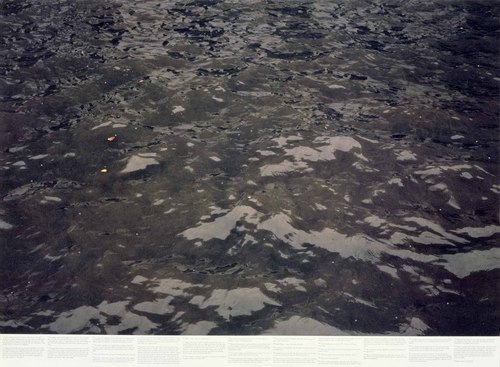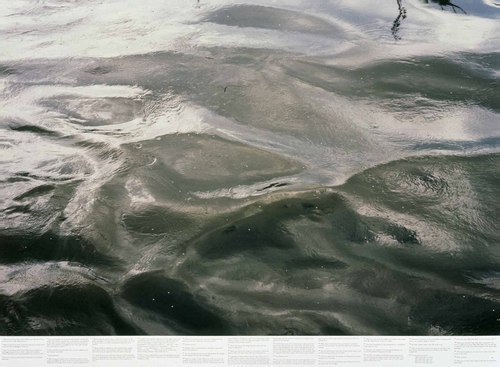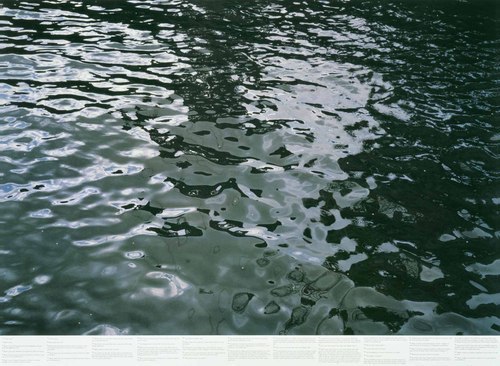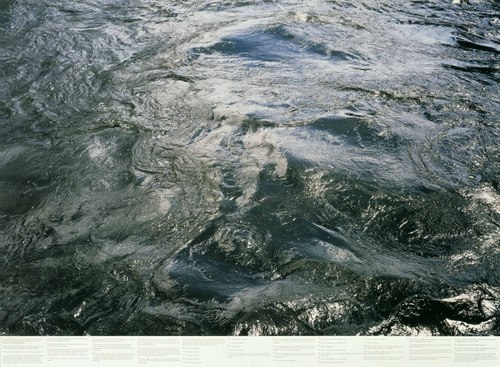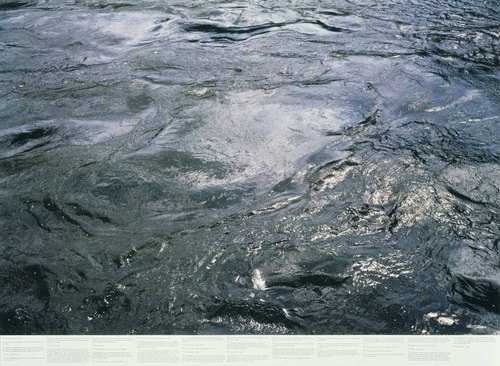Roni Horn
New York USA , lives and works in New York
Still Water (the River Thames for Example) A; C; E; I; J; M
1997-1999
offset lithography
77 x 105 cm each
(long term loan Han Nefkens H+F collection)
2008.lb.RH.01/1-6
Each of the images of Still Water (The River Thames, for Example) focuses on a small area of the surface of the river Thames. The colour and texture of these watery surfaces varies dramatically between images: colours range from black to blue and from dark green to khaki-yellow, and in each case the water’s texture is differently augmented by tidal movement and the play of light. Close inspection of the images reveals that tiny numbers in typeface are dotted like specks of flotsam over the water’s surface. The numbers refer to footnotes printed along the lower edge of each image’s white border. The text of the footnotes, while appearing strictly ordered according to the numbering system, is presented in a loose, fragmentary, stream of consciousness style. It seems that the viewer is encouraged to listen in on a conversation between the artist and herself. Some footnotes relate anecdotes connected with the Thames, particularly concerning incidences of suicide involving the river. Interspersing these observations are references to films and songs, and to literary sources including novels by Joseph Conrad (1857–1924), Charles Dickens (1812–70) and William Faulkner (1897–1962), and the poetry of Emily Dickinson (1830–86), whose works have inspired Horn elsewhere, such as in the installation Key and Cue, No. 1755 (reproduced in Roni Horn aka Roni Horn catalogue volume, pp.90–1.) The purpose of each footnote is to articulate a point of connection between viewer and image.
